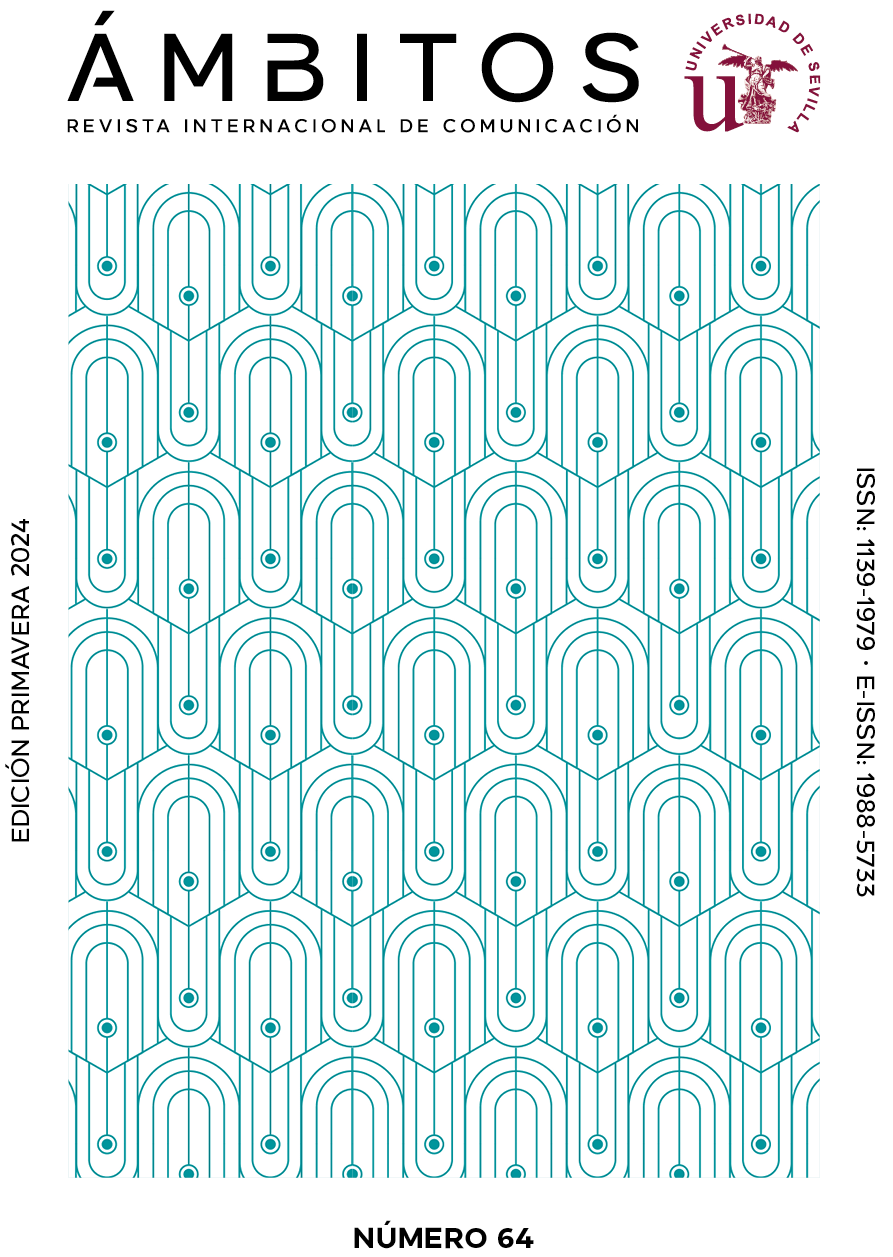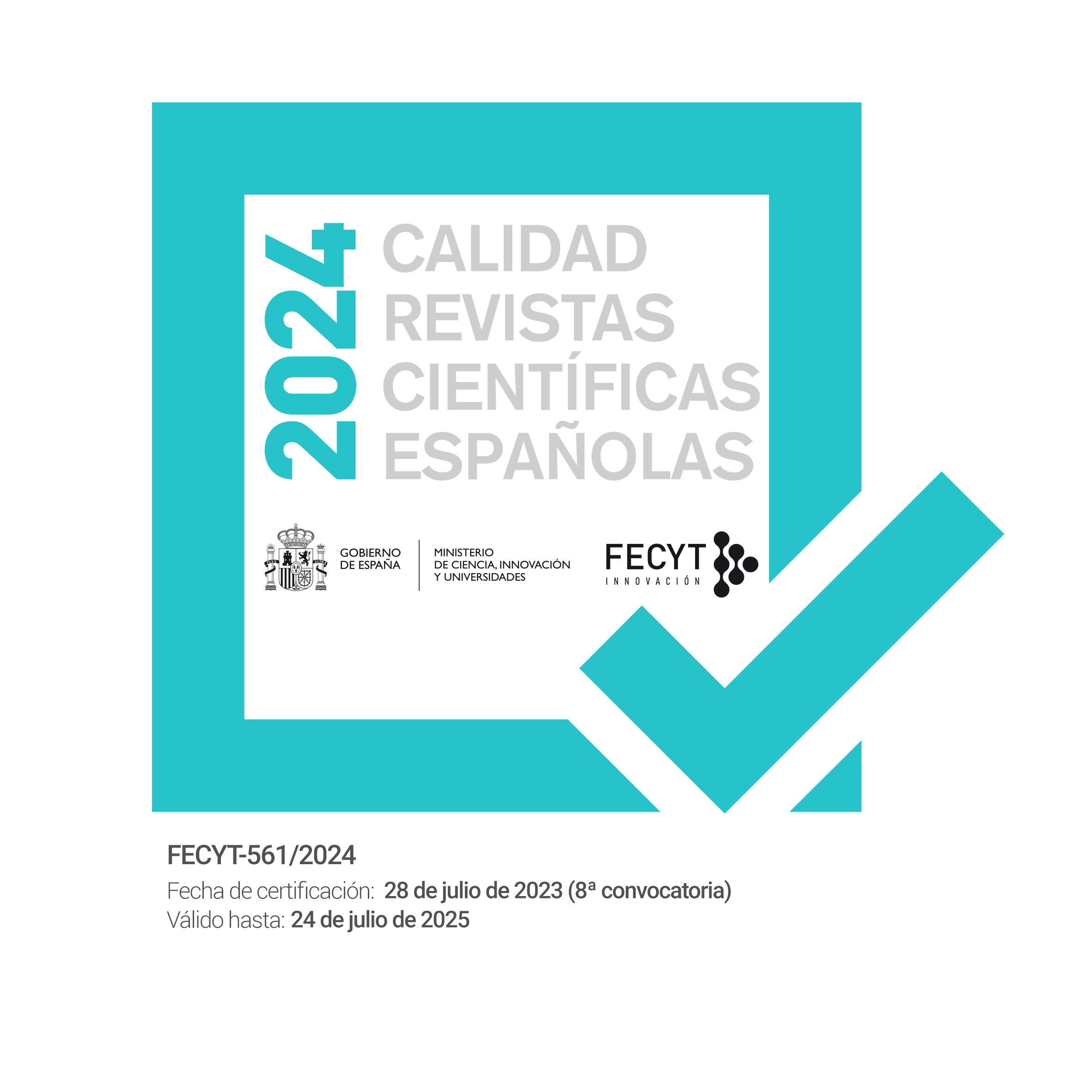Memorias del desencuentro: crisis política, legal y económica de los medios públicos de Ecuador
DOI:
https://doi.org/10.12795/Ambitos.2024.i64.07Palabras clave:
mapa mediático, Ecuador, medios públicos, periodismo público, democraciaResumen
El proyecto de creación y consolidación de los medios públicos en Ecuador nace con el propósito de democratizar la comunicación, el derecho de difundir y recibir información verídica y otras demandas sociales. Pero esta política no fue suficiente. El mapa mediático público estuvo conformado por 22 medios en el año 2007, para finales del 2023 sobreviven 6 medios públicos, sin considerar el conjunto de medios administrados por gobiernos seccionales y otros estamentos, que operan en 20 de las 24 provincias del Ecuador. En este contexto, la investigación cualitativa que se propone plantea como objetivo indagar las causas de la desaparición de algunos medios públicos y analizar desde una perspectiva historiográfica-descriptiva el mapa mediático público, desde los años 2007 a 2023, para lo cual utiliza un instrumento metodológico adaptado al caso ecuatoriano conocido como: Barómetro de sostenibilidad de los medios, compuesto por cuatro variables: salud económica de los medios, ambiente político, grado de incidencia de las reglamentaciones legales del sector y uso de la tecnología y las adaptaciones digitales, que permiten identificar los factores que han impedido el desarrollo sostenido e independiente del sector. Se concluye que, el financiamiento de los medios proviene del Presupuesto General del Estado lo que ha limitado su independencia. La participación del Estado ha influido en el diseño y difusión de los contenidos. Finalmente, las reformas y vigencia de las leyes concomitantes abonaron a la crisis del sector de los medios públicos, debilitado por un escaso respaldo de la audiencia.
Esta investigación analiza desde una perspectiva historiográfica-descriptiva el mapa mediático público (2007-2023), aplica un modelo adaptado para el caso ecuatoriano conocido como: Barómetro de sostenibilidad de los medios, compuesto por cuatro variables que permiten identificar factores que han impedido el desarrollo independiente del sector, evaluando a la par la participación política y gestión de los tres últimos gobiernos de elección popular.
Entre las variables del barómetro destacan: presiones políticas, manejo discrecional de la pauta publicitaria y las visiones administrativas distintas de los tres gobiernos de turno que han provocado una crisis en el sector público y, posteriormente, el cierre masivo. Los medios públicos subsisten a espaldas de la globalización digital y con un débil respaldo de la audiencia.
Descargas
Citas
Agencia EFE (2023, 8 de agosto). Ecuador: Gobierno de Lasso emite reglamento de la Ley de Comunicación para blindar la democracia. Publicación del El Comercio. https://lc.cx/U63yI1
Badillo, Á., Mastrini, G., & Marenghi, P. (2015). Teoría crítica, izquierda y políticas públicas de comunicación: el caso de América Latina y los gobiernos progresistas. Comunicación y sociedad, (24), 95-126. https://doi.org/10.32870/cys.v0i24.2524.
Buckingham, D. (2007). Media Education: literacy, learning and contemporary culture. Polity.
Becerra, M., & Mastrini, G. (2010). Concentración de los medios en América Latina: tendencias de un nuevo siglo. Contratexto, (018), 41–64. https://doi.org/10.26439/contratexto2010.n018.199
Chaparro, M., & Escorcia, H. (2014). Las reformas en las políticas públicas de comunicación en América Latina. En Chaparro Escudero, M. (Coord.), Medios de proximidad: Participación social y políticas públicas. Ámbitos Revista Internacional de Comunicación, (31), 35-54. https://lc.cx/PDxKKJ
Correa, R. (s.f.). La comunicación es un servicio público provisto y regulado por el Estado. https://lc.cx/b13gLf
Constitución de la República del Ecuador 2008. (Reforma 2011, 13 de julio). Decreto Legislativo. Registro Oficial 449 de 20-oct-2008. https://lc.cx/i0k9uT
Deslandes, G. (2016). Leadership in Media Organizations: Past Trends and Challenges Ahead. En G. F. Lowe & C. Brown (Eds.), Managing Media Firms and Industries (pp. 311-327). Springer. https://doi.org/10.1007/978-3-319-08515-9_18
Deuze, M. (2005) ¿Qué es el periodismo?: Se considera la identidad profesional o la ideología de los periodistas. Sage Journals (6), 403-421. https://lc.cx/TZiU5q
El Comercio (2020, 30 de septiembre). Lenín Moreno decreta creación de la Empresa Pública Medios Públicos de Comunicación del Ecuador. https://lc.cx/l14JZ4
Empresa Pública de Comunicación del Ecuador (2022) Informe de rendición de cuentas 2022. https://lc.cx/hEbk0f
Romero, D. (2021, 7 de diciembre). Casi 23 mil trabajadores de la comunicación despedidos. Fundación Periodistas sin cadenas. https://lc.cx/r17m7W
Guerrero M.; Márquez M. (2014). El modelo “liberal capturado” de sistemas mediáticos, periodismo y comunicación en América Latina. Temas de Comunicación, (2), 135-170. https://lc.cx/RAsiCs
Hallin, D., & Mancini P. (2004). Comparación de sistemas de medios. En Comparación de sistemas de medios: tres modelos de medios y política. Comunicación, Sociedad y Política. (pp. 21-45). Prensa de la Universidad de Cambridge. https://lc.cx/1h1yGf
Kitzberger, P. (2009). Las relaciones Gobierno-Prensa y el giro político en América Latina. POSTData: Revista de Reflexión y Análisis Político, (14), 157-181. https://lc.cx/rq1Npw
López-Olano, C. (2018). RTVV: Paradigma de la triple crisis de las radiotelevisiones públicas. Comunica (pp. 172). Tirant Lo Blanch. https://lc.cx/Pzmf_H
(Ley Especial de Telecomunicaciones 1992, 10 de agosto). Ley 184. Registro Oficial 996 (1992, 10-de agosto). Última modificación (2014, 12 de septiembre). https://lc.cx/oReDDc
(Ley de Radiodifusión y Televisión 1975, 18 de abril). Decreto Supremo 256. Registro Oficial 785 (1975, 18 de abril). Ultima modificación (2009, 6 de mayo). https://lc.cx/LOWt73
(Ley Orgánica de Comunicación, 2013, 25 de junio). Ley 0. Registro Oficial Suplemento 22 (2013, 25 de junio). Ultima modificación (2019, 20 de febrero). https://lc.cx/Hv8-rm
Mastrini, G. (2013). Medios públicos y derecho a la comunicación. Las políticas de comunicación en siglo XXI. La Crujía. https://lc.cx/bKPkfa
Medios Públicos EP. (2022). Home [https://www.facebook.com/EcuadorTV]. Facebook. Consultado el 22 de junio de 2023. https://lc.cx/UoaqdM
Medios Públicos. (2020, 29 de junio). Misión y Visión. http://www.mediospublicos.ec/quienes-somos/mision-yvision
Natanson, J. (2009). La nueva izquierda: Triunfos y derrotas de los gobiernos de Argentina, Brasil, Bolivia, Venezuela, Chile, Uruguay y Ecuador. POSTData: Revista de Reflexión y Análisis Político (14), 233-236). https://lc.cx/efMxLk
Ordóñez, K., Suing, A., Ortiz, C., Barrazueta, & P. Cruz, P. (2023). Ecuador: Una aproximación a la producción independiente e internacionalización de la producción de ficción televisiva (pp. 155-170). Observatorio Iberoamericano de Ficción Televisiva OBITEL. https://lc.cx/YB5loH
Pachana-Macay, A., Muñoz-Pico, H., & Becerra, C. (2023). La incautación de medios privados en Ecuador en la era Correa y sus consecuencias. Revista de Comunicación, (22), 457-473. https://doi.org/10.26441/RC22.2-2023-323
Plan V. (2022, 26 de julio). Los seis hallazgos de irregularidades en la adjudicación de frecuencias a medios radiales. https://www.planv.com.ec/historias/sociedad
Presidencia de la República de Ecuador (2007, s.f.). Los enlaces ciudadanos se realizaron en 157 cantones del Ecuador. https://lc.cx/y0XmN-
Picard, R. G. (2006). Journalism, Value Creation, and the Future of News Organizations. [Shorenstein Center Research Paper Series R-27], Harvard University, Cambridge. https://lc.cx/iPEV2D
Punín, M.I y Rencoret, N. (2014). Cambios en el mapa mediático del Ecuador: los medios públicos que tenemos y los medios que queremos. (pp. 434-446). Telos, (16), 434-446. https://lc.cx/q5NTPK
Registro Público de Medios (2022). Consejo de Comunicación. https://lc.cx/IArlUX
Soengas-Pérez, X., Rodríguez-Castro, M., & Campos-Freire, F (2023). La credibilidad de los informativos de la televisión pública en España. Comunicar, (76), 73-84. https://doi.org/10.3916/C76-2023-06
Unesco. (2016, 9 de agosto). Comunicación e Información. Promoción de la libre circulación de ideas por medio de la palabra y la imagen. Oficina Regional de Unesco https://lc.cx/rgJ53C
Unesco. (2019). Tendencias mundiales en libertad de expresión y desarrollo de los medios. Iinforme regional para América Latina y el Caribe 2017/2018. Oficina Regional de Unesco. https://lc.cx/_724n4
Publicado
Cómo citar
Número
Sección
Licencia
Derechos de autor 2024 Kruzkaya Ordóñez

Esta obra está bajo una licencia internacional Creative Commons Atribución-NoComercial-CompartirIgual 4.0.
Ámbitos. Revista Internacional de Comunicación es una revista de acceso abierto, lo que significa que todo su contenido está disponible gratuitamente para el usuario o su institución. Los usuarios pueden leer, descargar, copiar, distribuir, imprimir, buscar o enlazar con el texto completo de los artículos, o utilizarlos para cualquier otro fin lícito, sin solicitar permiso previo al editor o al autor. Esta definición de acceso abierto se ajusta a la Iniciativa de Acceso Abierto de Budapest (BOAI).

A menos que se indique lo contrario, todo el contenido de la edición electrónica se distribuye bajo una " licencia internacional Creative Commons Attribution-NonCommercial-ShareAlike 4.0 ". Puede consultar la versión informativa y el texto legal de la licencia aquí. Esto debe indicarse expresamente de esta manera cuando sea necesario.
En caso de aceptación del manuscrito, los autores ceden los derechos de la obra para su publicación a Ámbitos. Revista Internacional de Comunicación bajo el contrato de licencia Reconocimiento-NoComercial-CompartirIgual 4.0 Internacional (CC BY-NC-SA 4.0). Los autores conservan los derechos de autor y terceros están autorizados a copiar, distribuir y hacer uso de la obra, siempre que cumplan con los términos y condiciones establecidos en la licencia.
- Citar la autoría y la fuente original de publicación (revista, editorial y URL de la obra).
- No los utilice con fines comerciales.
- Si remezcla, transforma o crea a partir del material, debe publicar sus contribuciones bajo la misma licencia que el original.
Se puede encontrar más información en https://creativecommons.org/licenses/by-nc-sa/4.0/deed.es



















